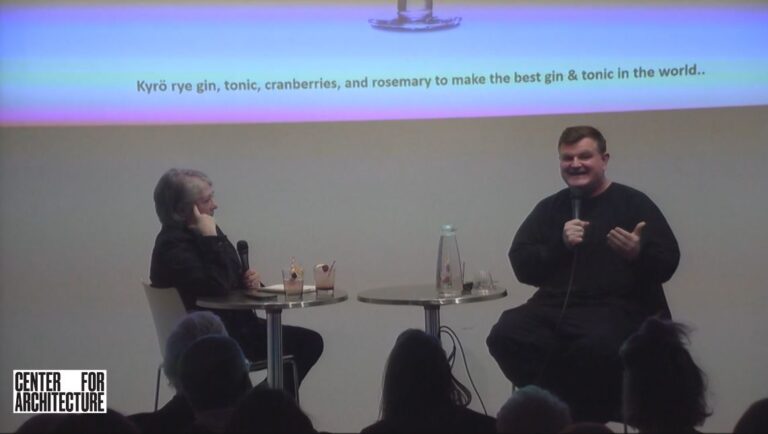Event: 2011 Rosenblatt Memorial Lecture: David Adjaye on Evolving Art and Exhibition Spaces
Location: Center for Architecture, 10.04.2011
Speaker: David Adjaye, Hon. FAIA, OBE — Principal, Adjaye Associates
Introduction: Paul Rosenblatt
Organizer: AIANY Cultural Facilities Committee
Sponsors: Stan Reis Photograph; Springboard Design; Brooklyn Brewery
David Adjaye, Hon. FAIA, OBE, not only designs cultural facilities, but sees his design process as a collaborative effort with the many artists and art collectors he has come to know over the years. His practice, which straddles the two disciplines in many ways, is about to break new boundaries in the U.S. as he moves into construction documents for the Smithsonian National Museum of African American History and Culture (NMAAHC) in Washington, D.C.
Adjaye’s collaborations range from an installation created for the 2005 Venice Biennale with Olafur Eliasson, called “Your Black Horizon,” to the Carriage House on the Upper East Side, a home for a prominent art collector. He described the former, which has been relocated to Lopud, Croatia, as a “machine that records light.” At the end of a passage bringing visitors from the outside through a series of paths that grow darker throughout the progression, a chamber reflects recorded light levels in various places in the world within a 24-hour period. Even though light spills through one small datum line, visitors are disoriented by the flood of light.
For the Carriage House, completed in 2010, Adjaye explained that “the client’s ideal is to live in a museum.” Referencing work by Philip Johnson, FAIA, and Paul Rudolph, FAIA, as well as Marcel Breuer’s nearby Whitney Museum, Adjaye looked to preserve and expose the layers of NYC history contained within the site. He accomplished this by revealing the uneven thicknesses of the sheer walls; using a dry concrete mixture that creates “geological phenomena,” rough and worn down in areas; and by exposing the Manhattan schist at the base of the existing building. Walls shift away from floors to create light wells that penetrate the height and depth of the building, and asymmetrical windows create unexpected views both into other spaces in the house and out to the cityscape.
Continuing and expanding on Adjaye’s exploration of urban archaeology, the NMAAHC, designed by the architectural team Freelon Adjaye Bond/SmithGroup, will be the last building to complete L’Enfant’s original master plan on the National Mall. With its design, Adjaye is seeking to develop a narrative in the building itself. Noting that the site is adjacent to the Washington Monument — an obelisk complete with a pyramid on top — the shape of the building is an inverted pyramid, similar to those in ancient Benin. The rain screen curtain wall is comprised of elements that relate to both Urdu sculptures and the ironsmithing and carpentry guilds in Louisiana, and the varying apertures are intended to draw visitors through the buildings as well as direct their views out to the key monuments on the Mall and beyond. Expected to be complete in 2015, Adjaye, both in his body of work and in this building alone, aims to tell “a story shown through another lens.”


